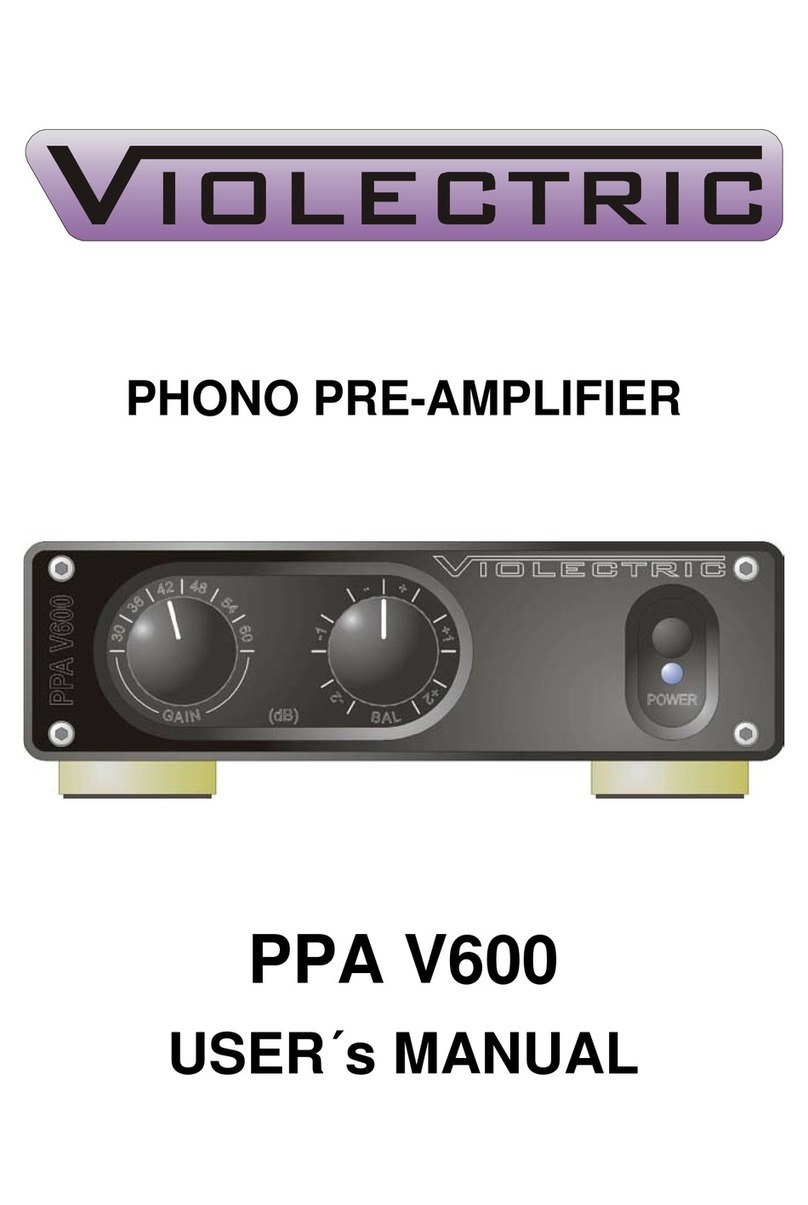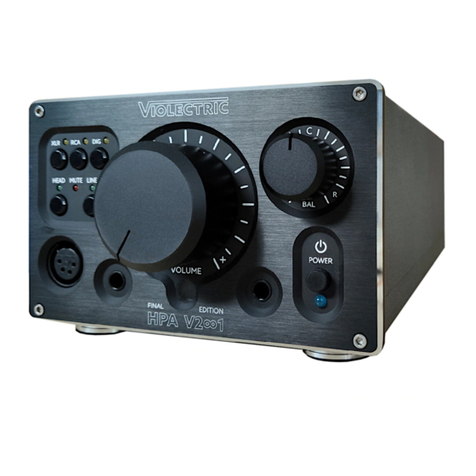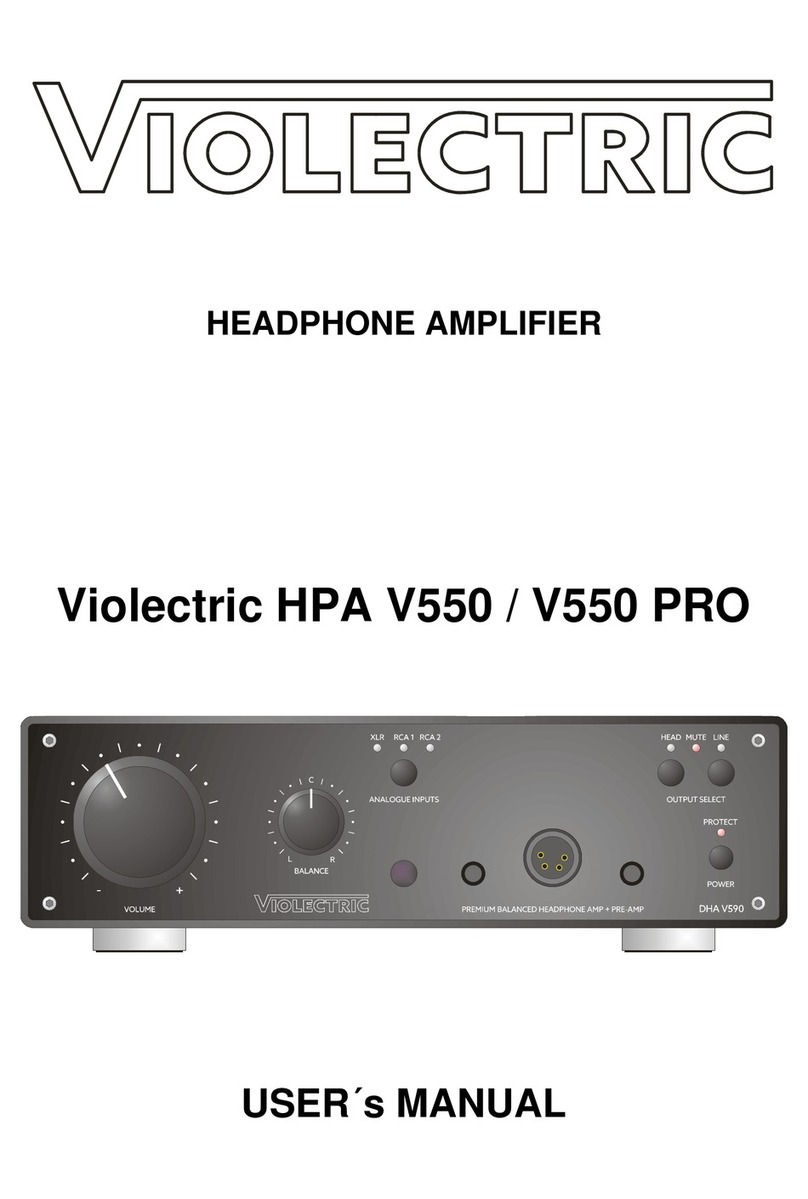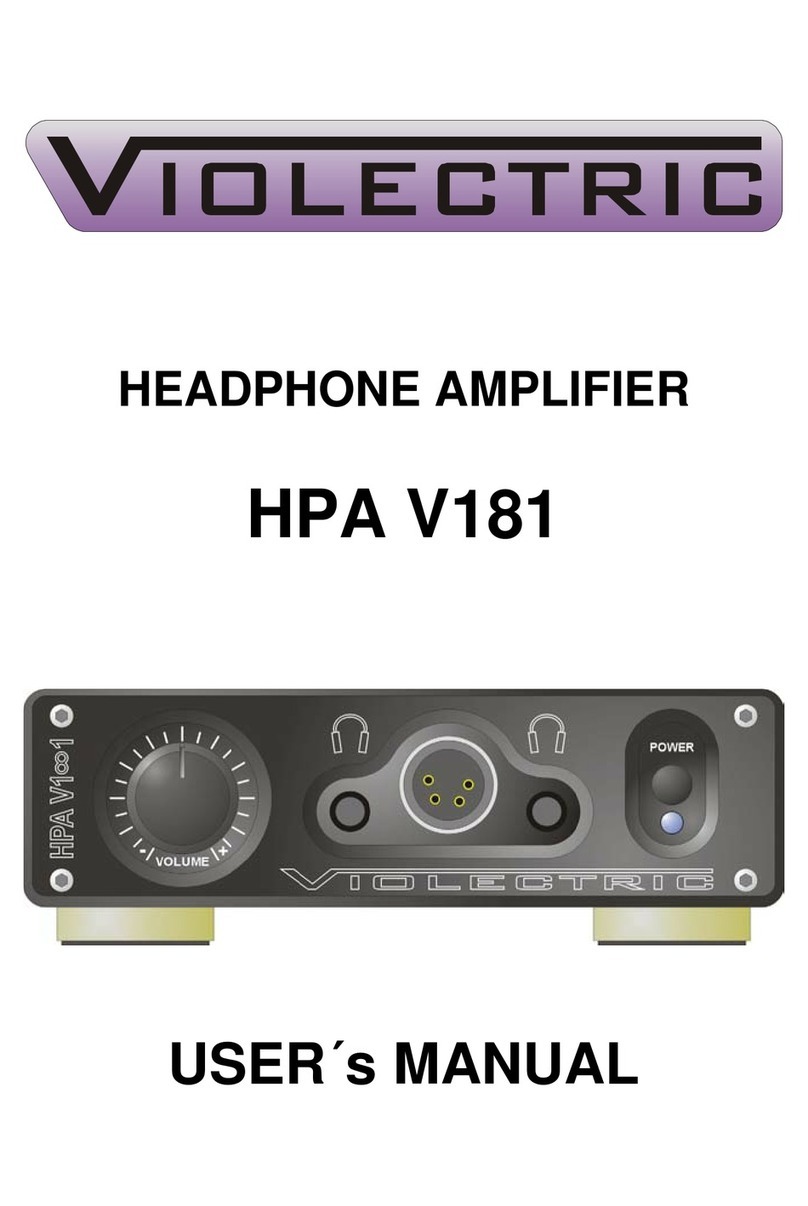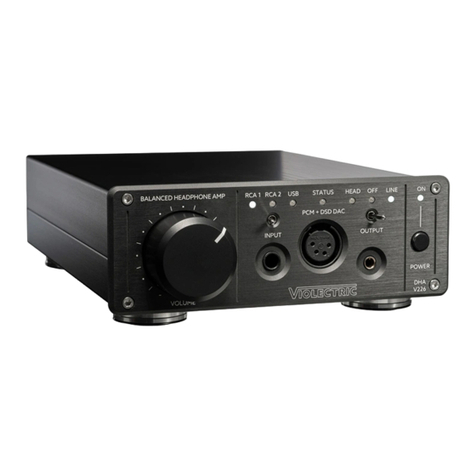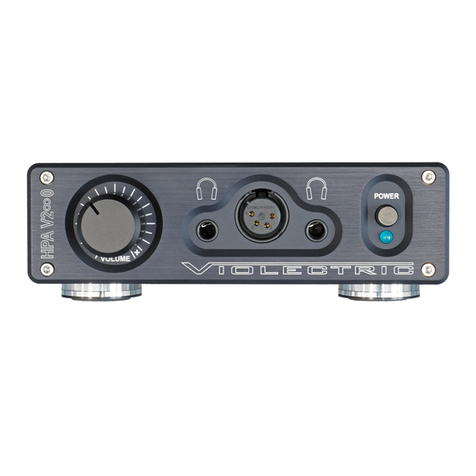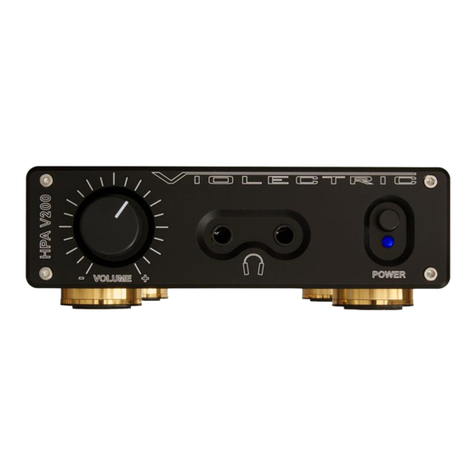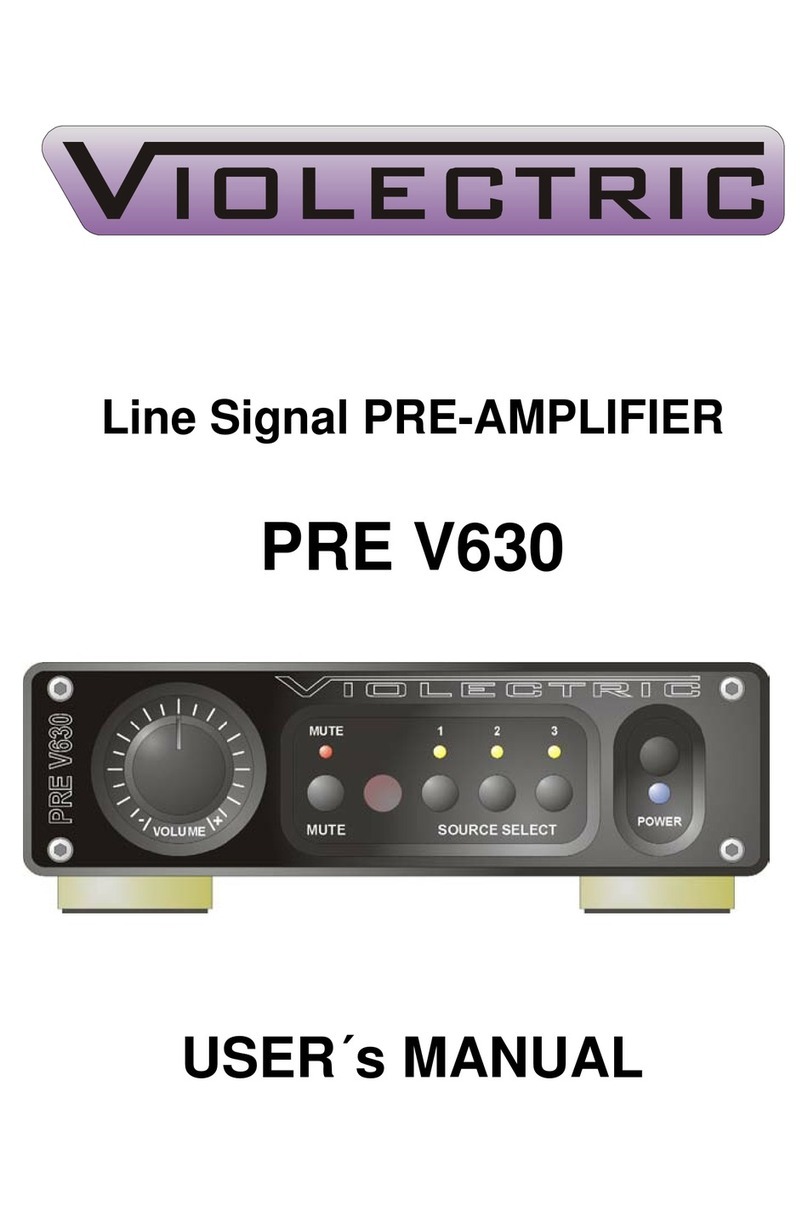10
GENERAL INFORMATION
The HPA V200 is a stereophonic headphone amplifier designed to drive
low-, medium- and high-Z loads (16...600 ohms) as usually represented
by high-quality headphones. Due to its specific, variable and low-noise
and distortion circuit design especially optimised for dynamic
headphones, the HPA V200 fulfils even highest demands.
Features:
- Balanced inputs with gold-plated Neutrik XLR connectors
- Unbalanced inputs with gold-plated ALPS cinch connectors
- switchable unbalanced outputs with cinch connectors
- USB input Type B
- PRE-GAIN = switchable input gain in five steps
- Independent-channel design
- DC-coupled (switchable)
- ALPS RK27 High-Grade volume control
- High-Quality op-amps in the signal path
- High-quality MKP capacitors in the signal path
- 0.1 and 1% metal film resistors throughout the unit
- Discrete-design power amp with 8 transistors per channel
- 2 silver-plated Neutrik headphone outputs
- Relay-based headphone output cutoff
- Toroidal transformer
- Large filtering capacitors in the power supply
- Switchable ground lift
- Rugged aluminium case with Nextel coating
- Solid, laser-engraved aluminium front panel
With its small dimensions, the HPA V200 ensures optimum flexibility
combined with high output power. During design, high emphasis was
put on operational safety even when the unit is operated inappropriately.
The HPA V200 is equipped with internal filters to prevent damage to the
connected headphones due to high-frequency overload beyond the
audible range.

